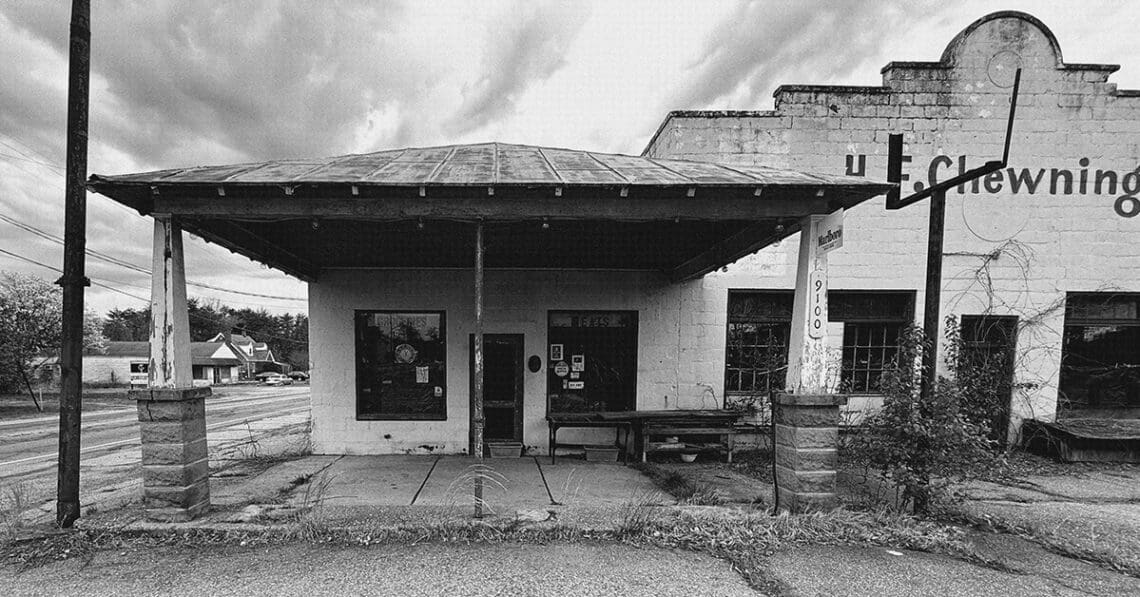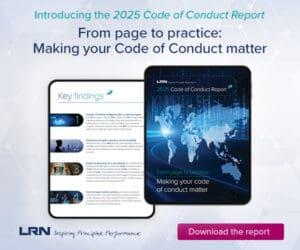While distressed asset investing gives buyers unique opportunities to preserve and generate value, these deals are far from one-size-fits-all. Zev Shechtman of Saul Ewing explores the diverse nature of distressed asset investing using two scenarios involving a fictional equipment manufacturer and an equally fictional buyer.
When entering the world of distressed asset investing, purchasers face unique challenges requiring thoughtful analysis and planning. Below, I explore the range of distressed transactional scenarios through two illustrative examples. Through the lens of a hypothetical buyer, we explore some of the top concerns for in-house decision makers, attorneys, advisers and risk assessors when dealing with distressed deals.
“Distress” in the context of transactions refers to a broad spectrum of circumstances. On one end of the spectrum are ostensibly conventional deals with minimal or latent distressed features. The company may appear solvent, profitable and well-managed. However, there may be some lurking liabilities to give the buyer’s deal team pause.
At the other end of the spectrum are transactions involving deeply insolvent companies that are unequivocally struggling. Such companies may be struggling to pay their debts, to comply with contractual obligations or to continue business as a going concern. The world of distress includes a variety of situations between these two ends of the spectrum. Due diligence teams should go into the distressed ecosystem understanding this range and their companies’ appetite for it.
Example A: Forky 1.0
The buyer, BPE, invests in high-value distressed opportunities in the middle market in industrial and manufacturing sectors. BPE seeks to expand its vertical of cutting-edge warehouse equipment manufacturers and distributors. BPE’s leadership has identified a prime acquisition target: Forky, a top-tier forklift manufacturer owned by one family for over 50 years. Forky operates with little debt. It has an unparalleled reputation for quality and offers the gold standard of extended warranties.
BPE’s diligence team, including in-house counsel and chief risk officer, together with outside counsel and M&A advisors, are carefully assessing the long-term liabilities under Forky’s extended warranties. BPE’s deal team determines that liabilities under such warranties are likely to exceed the purchase price by multiples within five to 10 years and are concerned about how to account for such a significant future liability.
BPE’s deal team has evaluated the options available: insurance, indemnification and bankruptcy. But the insurance cost is excessive and Forky’s owners will not provide indemnifications to cover the magnitude of risk. BPE’s outside counsel and M&A advisers recommend an asset sale through bankruptcy as the solution that, although more expensive upfront, offers the highest level of protection from future liabilities. That is because bankruptcy allows for a sale by bankruptcy court order free and clear of liabilities, including future liabilities under a warranty.
After deciding that bankruptcy was the only path remaining, BPE’s deal team presented a compelling financial offer to Forky, subject to a comprehensive bankruptcy sale process. However, Forky rejected the offer because it had a lower estimate of the warranty liability, did not agree that bankruptcy was necessary and felt it would be ruinous to its brand. Forky sold to another suitor at a lower price in a debt-financed transaction. BPE was disappointed but confident in its risk assessment.
For Today’s Startup, M&A Isn’t Just a Lucrative Exit — It Could Be a Path Forward
Successful startups are embracing deal complexity
Read moreDetailsExample B: Forky 2.0
Five years later, Forky is for sale again. The new owners, despite having the same information as BPE, underestimated the warranty risk. Forky is now saddled with the secured debt that funded the last sale. Forky spent tens of millions of those borrowed dollars on R&D for a line of automated forklifts. Despite securing multiple patents, the automated forklifts have not yet obtained commercial success. To reduce overheard, Forky laid off its entire service department and now contracts out repairs, and it has made cuts to sales and marketing. The company is falling months behind on warranty services. Lawsuits have been filed by several significant customers alleging breach of warranty. Sales are down. Forky is falling behind on its rent. The rent is 50% above-market with 12 years remaining on a lease for 50% more space than the company needs in light of its downsizing.
BPE is looking at Forky again. While Forky’s balance sheet is not what it was five years ago, it remains respected for quality and it still has a strong core of engineering and manufacturing talent, impressive facilities and vaunted proprietary technology. If decisive action is taken, BPE’s leadership believes that an operational turnaround plan is likely to succeed.
BPE now needs to structure a transaction that resolves the secured debt, the rent and warranties, while developing and then executing an operational business plan to succeed on a go-forward basis. The facts presented this time offer little room to maneuver outside of bankruptcy. The most direct way to cut off warranty liability for the venture going forward — and to dispense with liabilities under unexpired leases and other debt — is through a Chapter 11 reorganization or a bankruptcy sale.
This time, Forky embraces BPE as its stalking horse bidder (meaning the initial proposed purchaser in a bankruptcy sale subject to overbid). Through careful planning and preparation over a 90-day diligence and Chapter 11 preparation period, Forky files its Chapter 11 petition and within another 60 days, the sale closes to BPE. The Chapter 11 plan calls for modifications of the extended warranties to make them affordable to the operations going forward.
Some of Forky’s unsecured creditors, including pre-bankruptcy professionals and discontinued vendors will be paid less than 5 cents on the dollar for their claims, while Forky’s most critical vendors are paid most or all of their claims. Leveraging the alternative of lease rejection, BPE negotiates a major reduction in rent and has hired back some of the top service and repair staff who were laid off during Forky’s prior downsizing, ensuring that new Forky will be able to meet its reduced but still significant warranty service obligations. The secured debt is paid in full. BPE is proud to be part of Forky’s rehabilitation and bring it into its family of businesses.
‘Distress’ is in the eye of the beholder
The first lesson from the examples above is that issues of distress are not always obvious. While the fact pattern of Forky 1.0 may seem like an example of “light distress,” BPE viewed the risk as high enough to warrant a bankruptcy filing, even while Forky 1.0 seemed to be doing well from a balance sheet perspective based on its internal valuation of the warranty liability.
The BPE team in the Forky 1.0 transaction appreciated the significance of future liabilities. The buyer of Forky 1.0 was less concerned about the warranty risk but then incurred additional risks through aggressive changes to the business, affecting quality of service and rolling up expenses that exceeded its ability to pay without incurring excessive debt. Where BPE had the most success was in identifying the risk and managing it through an appropriate process. Then it was able to afford to incur entrepreneurial and financial risk with Forky 2.0 on a manageable scale.
Forky 1.0 had other options that might have avoided bankruptcy, or might have made bankruptcy less expensive or more successful. Yet, distressed companies often delay dealing directly with their problems. Especially when problems are not obvious or not yet matured, businesses have a hard time recognizing that they are on a path to financial failure. Recognition is a precondition to correction.
Overt distress
In an overtly distressed sale, the seller is often a fiduciary, such as a trustee or receiver. Even if no professional fiduciary is in place, an insolvent company has a fiduciary duty to maximize value to creditors, not shareholders. Liquidation sales usually have caveats, such as: “As-Is, Where-Is,” “No Representations or Warranties,” “No Contingencies,” while limiting the sale to “Right, Title and Interest” in assets. These and other terms are intended to make the buyer aware that the buyer is entirely responsible for its own due diligence and that it should not expect future help from the seller other than the papers documenting the sale of the estate’s “right, title and interest” in the property. Such limitations are necessary and appropriate for a liquidating fiduciary lacking personal knowledge regarding the assets for sale. In high-distress sales, it is generally the responsibility of the buyer to conduct due diligence without the assistance or any assurances from the seller.
Meanwhile, as in the Forky 2.0 example, the main benefit of a sale through bankruptcy is the ability to purchase all assets free and clear of liabilities. Thus, the warranties, the lease and all unpaid accounts payable can be eliminated. The buyer may have the option to honor certain commitments as an incentive for customers, vendors, landlords and others it wishes to continue doing business with. The buyer can judiciously determine which, if any, of those commitments are truly beneficial to the company and assume only those liabilities. Outside of a court process, such selective payment of liabilities is not possible without consent of the creditors. The larger and more diversified the pool of creditors, the harder it will be to obtain such consent.
Sale procedures
A bankruptcy or receivership sale of substantially all of the assets of a company requires court approval. Such sales often include an auction process. The deal team in such sales needs to carefully review the sale procedures to ensure technical and substantive compliance. Buyers who do not carefully and timely comply with the procedures set forth in court filings are less likely to be successful.
Outside of court, there may be more flexibility; however, when sales are conducted out of court, there is less protection to the buyer from potential litigation on account of liabilities of the former owner of the assets.
On the “light” side of distress, such as in the Forky 1.0. example, buyers might experience ordinary transactional processes led by investment bankers and transactional attorneys. But they need to make sure they review potential distress issues and that debts are properly handled.
Conclusion
The spectrum of distressed transactions is broad. Distressed transactions can offer unique opportunities to preserve and generate value. However, to ensure success, careful review of both overt and latent liabilities is critical. Opportunities should not be lost because of aversion to complexity. Yet failure should not come as a surprise when distress is ignored. In a way, overt distress may be easier to deal with, as it can compel alignment and action. Diagnosing distress early is the first step in the path to success in distressed transactions.




 Zev Shechtman is a partner at Saul Ewing, based in the firm’s Los Angeles office. He represents clients in complex business bankruptcy, restructuring and insolvency matters in and out of court. His experience includes representing debtors in Chapter 11, including subchapter V, bankruptcy reorganization cases, assisting debtors in settlement negotiations and counseling regarding insolvency concerns. Zev also represents creditors, trustees, buyers of distressed assets, equity holders and contract parties in bankruptcy.
Zev Shechtman is a partner at Saul Ewing, based in the firm’s Los Angeles office. He represents clients in complex business bankruptcy, restructuring and insolvency matters in and out of court. His experience includes representing debtors in Chapter 11, including subchapter V, bankruptcy reorganization cases, assisting debtors in settlement negotiations and counseling regarding insolvency concerns. Zev also represents creditors, trustees, buyers of distressed assets, equity holders and contract parties in bankruptcy. 







